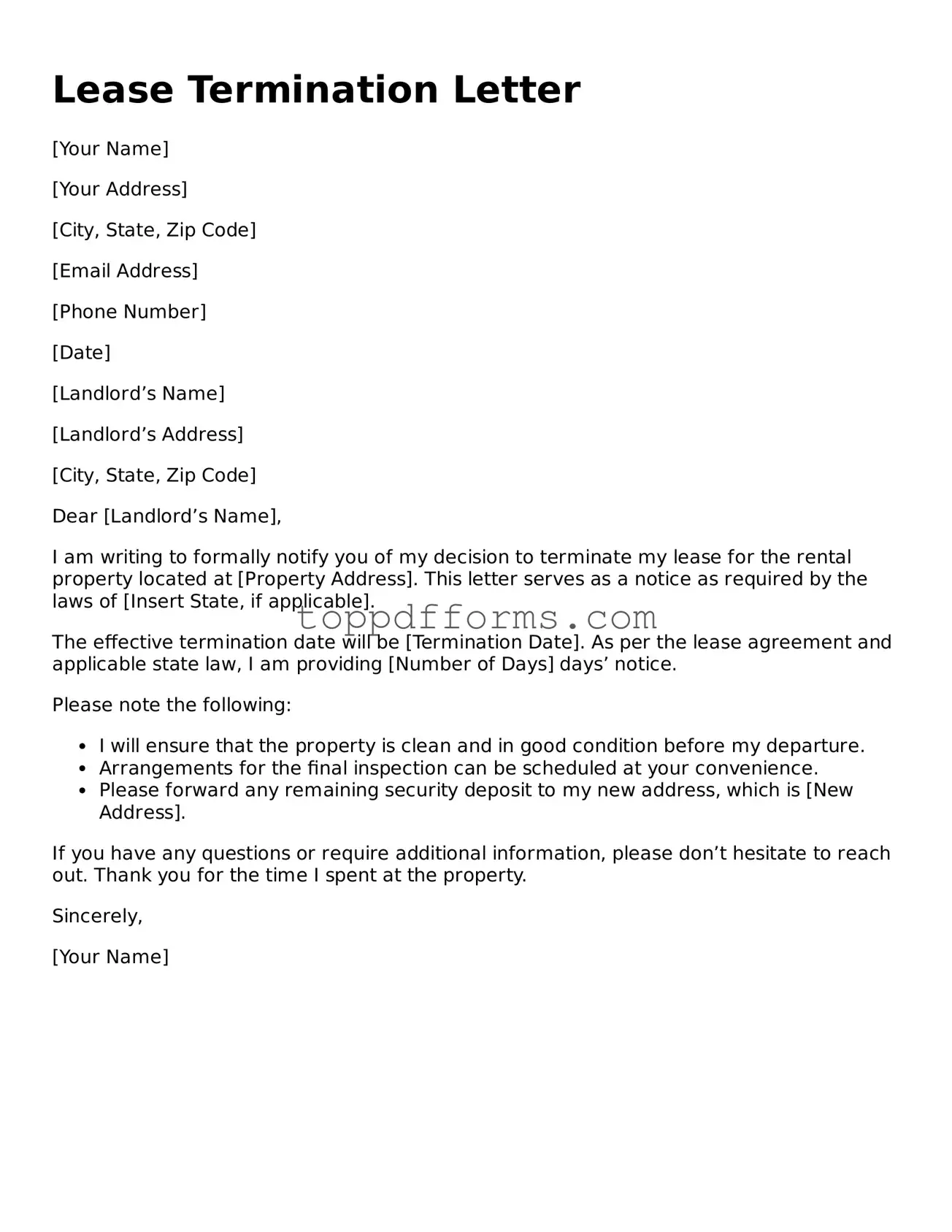What is a Lease Termination Letter?
A Lease Termination Letter is a formal document that notifies a landlord or tenant of the intention to end a lease agreement. This letter serves as a written record of the decision to terminate the lease and outlines the specifics, such as the termination date and any relevant details regarding the condition of the property. It is crucial for both parties to have a clear understanding of the termination process to avoid potential disputes.
When should I send a Lease Termination Letter?
The timing of your Lease Termination Letter is essential. Typically, you should send this letter well in advance of your intended move-out date. Most leases require a notice period, often 30 or 60 days, depending on the terms of the agreement. Check your lease for specific requirements. Sending the letter promptly ensures that you comply with these terms and helps maintain a positive relationship with your landlord or tenant.
What information should be included in the Lease Termination Letter?
Your Lease Termination Letter should include several key pieces of information. Start with your name and address, followed by the landlord's name and address. Clearly state the date you are sending the letter and the date you intend to terminate the lease. It is also helpful to reference the lease agreement, including the start date and any specific terms related to termination. Lastly, include a request for a final inspection of the property and instructions for returning keys or other items.
Do I need to provide a reason for terminating the lease?
What happens after I send the Lease Termination Letter?
After sending your Lease Termination Letter, it is advisable to keep a copy for your records. Expect to receive a confirmation from your landlord or tenant acknowledging the receipt of your letter. This confirmation should outline the next steps, such as scheduling a final inspection or discussing any potential deductions from your security deposit. Ensure you maintain open lines of communication to address any questions or concerns that may arise.
